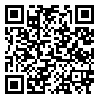Volume 5, Issue 4 (october 2021)
AOH 2021, 5(4): 1092-1093 |
Back to browse issues page
Download citation:
BibTeX | RIS | EndNote | Medlars | ProCite | Reference Manager | RefWorks
Send citation to:



BibTeX | RIS | EndNote | Medlars | ProCite | Reference Manager | RefWorks
Send citation to:
Laal F, Fallah Madvari R. Dynamic Quantitative Risk Assessment (DQRA): New Fields of Study in Risk Assessment. AOH 2021; 5 (4) :1092-1093
URL: http://aoh.ssu.ac.ir/article-1-281-en.html
URL: http://aoh.ssu.ac.ir/article-1-281-en.html
1- Social Determinants of Health Research Center, Department of Occupational Health Engineering, Birjand University of Medical Sciences, Birjand, Iran , fereydoonlaal@gmail.com
2- Department of Occupational Health, School of Public Health, Shahid Sadoughi University of Medical Sciences, Yazd, Iran
2- Department of Occupational Health, School of Public Health, Shahid Sadoughi University of Medical Sciences, Yazd, Iran
Keywords: no keywords
Full-Text [PDF 740 kb]
(257 Downloads)
| Abstract (HTML) (644 Views)
he increasing complexity of technology and industrial advances have led to severe consequences of hazard accidents. This, along with close economic competition, could jeopardize the survival of industries. Therefore, considering this point and since any accident can impose simple or acute consequences on society, the issue of identifying, assessing, and controlling hazards has gained special importance. 1, 2 The general interest in risk analysis and assessment has expanded over the past three decades, so that risk analysis as an effective and comprehensive method has a complementary and managerial role in almost all aspects of life. 3 One of the most important reasons for the development of methods of risk analysis and assessment is the complexity of the situation, problems related to the composition of information, and uncertainty in decisions. 2, 4 Recent developments in risk and safety also reflect the focus of this research on challenges, such as uncertainty, information scarcity, and systems complexity. Khan et al. categorized risk assessment methods into qualitative, semi-quantitative, quantitative, and hybrid 5 , in which hybrid studies are used to reduce uncertainty. One of the main disadvantages of conventional risk assessment approaches is their static behavior or inability to improve risk over time. Artificial intelligence techniques, such as neural networks, Bayesian networks, and fuzzy logic are some of the approaches that have been used in recent studies to reduce dynamism and uncertainty. These approaches are called dynamic quantitative risk assessment (DQRA). 6, 7 Several mathematical and analytical techniques have also been developed that reduce the uncertainty of probabilistic quantification. Kalantarnia et al. also developed a dynamic risk assessment methodology using previous information and the Bayesian update mechanism. 3 Laal et al. and Pouyakian et al. in different studies presented methods based on the fuzzy Bayesian network to reduce completeness, modeling, and parameter uncertainties in firefighting systems and floating roof storage tanks, respectively. 7, 8
There is evidence that the transition from quantitative risk assessment (QRA) to DQRA has been a natural evolutionary trend in studies. These studies have also focused more on risk-based decision making rather than risk-based decision making. DQRA enables the implementation of inherent safety principles; features that are most required in hazardous processes. This approach makes it possible to create new models and methods that make risk decisions and assessments at the right time. Therefore, recent studies have
shown that future developments in risk and safety management tend to monitor the dynamic process for risk identification, advanced management outcome modeling, dynamic risk assessment, identification of unusual hazards, participation of organizational and human factors in risk assessment, and creating a safety protection layer. Therefore, it is required to conduct further studies in this regard.
Full-Text: (216 Views)
| T |
There is evidence that the transition from quantitative risk assessment (QRA) to DQRA has been a natural evolutionary trend in studies. These studies have also focused more on risk-based decision making rather than risk-based decision making. DQRA enables the implementation of inherent safety principles; features that are most required in hazardous processes. This approach makes it possible to create new models and methods that make risk decisions and assessments at the right time. Therefore, recent studies have
shown that future developments in risk and safety management tend to monitor the dynamic process for risk identification, advanced management outcome modeling, dynamic risk assessment, identification of unusual hazards, participation of organizational and human factors in risk assessment, and creating a safety protection layer. Therefore, it is required to conduct further studies in this regard.
Type of Study: Editorial |
Subject:
General
Received: 2021/08/19 | Accepted: 2021/10/1 | Published: 2021/10/15
Received: 2021/08/19 | Accepted: 2021/10/1 | Published: 2021/10/15
Send email to the article author
| Rights and permissions | |
 |
This work is licensed under a Creative Commons Attribution-NonCommercial 4.0 International License. |







